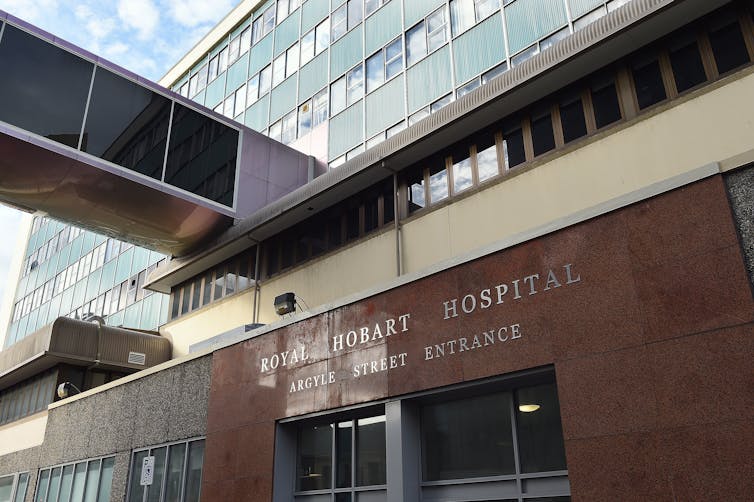Why the Jacquie Lambie Network's Tasmanian health plan doesn't add up
- Written by Helen Dickinson, Associate Professor, Public Service Research Group, UNSW
The polls are predicting a hung parliament in Tasmania’s March 3 election. So it’s not surprising that key political players are starting to jockey for position. The Jacqui Lambie Network (JLN) has stepped into this fray, demanding control of the health ministry in return for providing a guarantee of confidence and support to a minority government.
“Enough is enough,” the JLN campaign page says, explaining that:
“… despite heroic efforts by our doctors, nurses and other health professionals the Tasmanian health system is in permanent crisis. It has been mismanaged by successive Labor and Liberal administrations for well over a decade and beyond.”
The JLN has a “plan to fix” this situation, but it is short on detail and unlikely to improve the health system or outcomes for Tasmanians over the longer term.
Read more: Tasmanian election likely to be close, while Labor continues to lead federally
The state of the Tasmanian health system
Health is an important topic of debate in Tasmania, given the state experiences some of the poorest health outcomes in the country. Tasmania suffers from high rates of chronic disease, obesity and smoking, poor nutrition, and low physical activity levels.
Many of these indicators will come as no surprise, given Tasmania struggles with high unemployment in some areas and low economic growth relative to other states and territories. Although there has been some improvement in recent years, entrenched poverty remains a problem for the island state.
The JLN makes a number of criticisms of the Tasmanian health system including: long waiting times for surgery, a lack of “properly funded and clinically staffed” hospital beds and a health system that is uncoordinated and mismanaged.
It contests that elective surgery waiting lists are “out of control”, with “Tasmanians often waiting four times longer than our counterparts across the Bass Strait”.
The JLN plan to ‘fix’ health
The plan for addressing these issues is vague, at best. The first stage is to employ the services of Aspen Medical, a private firm, which will “review” the health system and recommend ways to speed up hospital admissions and reduce waiting lists for surgery.
Aspen Medical describes itself as a “global provider of guaranteed, innovative and tailored health care solutions across a diverse range of sectors”. It has provided services nationally and internationally under contract to various levels of the Australian government, among other clients.
Further, at a time when governments are again under pressure for using too many consultants, this might not seem like an obvious choice to “save” the health system.
Read more: Public hospital blame game – here's how we got into this funding mess
Following the scoping study to identify the problems in the system, in the medium term, the JLN says there will be “a special intervention by Aspen or a comparable company”.
Over the longer term, a feasibility and benefit study into a new public and private health centre will be completed, with the aim of building a new hospital located on a greenfield site in a central location on the North-West Coast.
 The state of the Tasmanian health system is not as dire as Lambie and colleagues make out.
AAP Image/Dave Hunt)
The state of the Tasmanian health system is not as dire as Lambie and colleagues make out.
AAP Image/Dave Hunt)
Will this work?
It’s unlikely to make a difference. Both the starting point and the solutions offered aren’t quite right.
The state of the Tasmanian health system is not as dire as Lambie and colleagues make out. While it is true that Tasmania has traditionally performed badly in terms of waiting times for surgery, successive improvement plans have had some impact.
Recent figures on the performance of public hospitals show that in 2017, 90% of those on the waiting list were seen within 300 days, down from 450 days the year before.
More than half of those on the waiting list were treated within 41 days in 2017, down from 60 the previous year and only a few days above the national average of 38 days.
This is not to say that there is no further room for improvement. But the process of turnaround seems to be in place. Hard working clinical professionals should be supported to continue these gains, rather than simply just abandoning wholesale the approaches adopted.
Read more: Infographic: a snapshot of hospitals in Australia
Debates have rumbled on for years about the lack of hospital beds in Tasmania and whether the health system is underfunded. It may be true that there is a need to increase capacity of hospital beds in the state. But this alone will not deal with the health system’s challenges.
Building a new hospital may alleviate some of the pressures that Tasmania faces; although the idea that there is an “ideal” site to situate a hospital is fanciful at best and will likely encounter challenges of those who live close to a hospital at present.
But the more worrying part of this plan relates to the fact that it treats hospitals as the most important part of the health care delivery infrastructure. Much of the international literature on health systems suggests a need to move away from hospital-centric models of service delivery.
As developed nations encounter growing numbers of people with chronic and complex illness, we need to enhance community and primary care to most effectively and efficiently serve this population’s health needs. This is even more pressing in contexts of socioeconomic disadvantage. Investing in preventative care is a way to improve patient outcomes and, over the longer term, slow growth in health funding increases.
The evidence shows that Tasmania spends significantly less than other states on public health interventions. By simply focusing on waiting times and hospital admissions, the JLN is missing an important part of the health system. In effect, this plan is seeking to treat the symptoms and not the cause.
Read more: Focus on prevention to control the growing health budget
Authors: Helen Dickinson, Associate Professor, Public Service Research Group, UNSW
Read more http://theconversation.com/why-the-jacquie-lambie-networks-tasmanian-health-plan-doesnt-add-up-91235



















